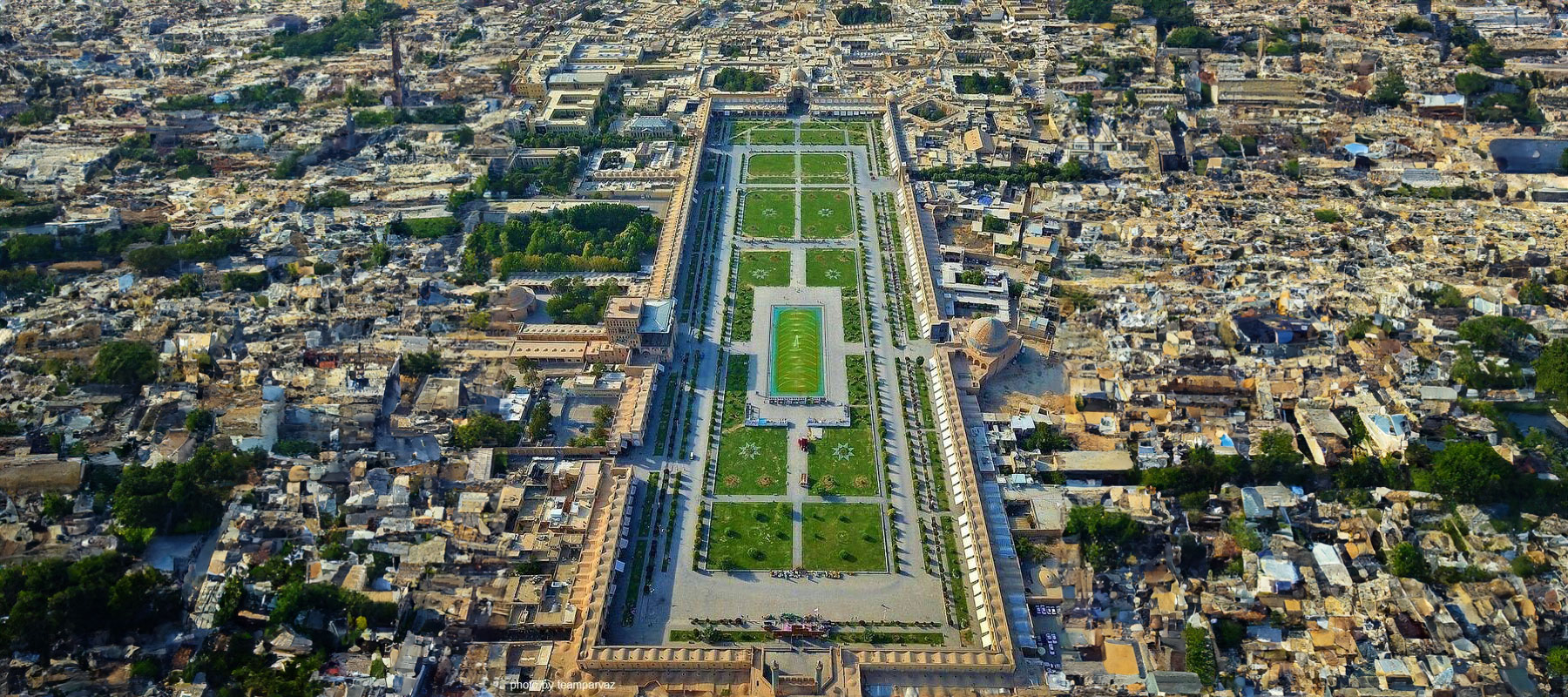
Chehel Sotoon Palace in Isfahan
Standing as a testament to Isfahan's rich history, Chehel Sotoon Palace beckons with its allure. Located adjacent to Naqsh Jahan square and Cheharbagh, this historical monument showcases the opulence of the Safavid era. The palace's central edifice preserves memories of Isfahan's role during the Safavid reign, designed under the guidance of Sheikh Bahai. With its captivating architecture dating back to the 17th century, this palace captivates the gaze of travelers and enthusiasts alike. Among its many marvels, the exquisite wall paintings that adorn its forty columns stand as a captivating attraction. The interplay of light and water creates an illusion of forty pillars, earning it the moniker "Forty Pillars."
Operating as a museum, the central hall of the palace showcases art from various periods of Iran's history. If you're considering buying a plane ticket and embarking on a journey to Isfahan, make sure to include a visit to this magnificent royal complex on your itinerary, alongside other iconic attractions like Ali Qapu, thirty-three bridges, Vank Church, and the Bird Garden.
.jpg)
This article unfolds:
- Why Chehel Sotoon Palace is a Must-Visit
- Tracing the Historical Roots of the Palace
- Architectural Highlights of Chehel Sotoon
- How to Reach Chehel Sotoon Palace
- Optimal Season for Isfahan Travel
- Nearby Attractions Around Chehel Sotoon Palace
- Accommodation Options Near the Palace
1. Why Chehel Sotoon Palace is a Must-Visit
- Renowned as one of the nine Iranian Gardens, the Forty Pillars Palace is part of the 23 registered works of Iranian World Heritage under the Iranian Garden category.
- Elaborate paintings grace the walls of Chehel Sotoon Palace, enhancing its allure and charm.
- The palace stands among the most prominent and sought-after tourist attractions in Isfahan.
2. Tracing the Historical Roots of the Palace
This palace was erected during the reign of Shah Abbas I, famously known as Abbas the Great, a period when Isfahan claimed its status as Iran's capital. The expansive boulevard of Chaharbagh and the surrounding Iranian gardens, including the verdant expanse of Chehel Sotoon, played pivotal roles in the transformation. This garden seamlessly connected Chaharbagh to Naqsh Jahan square. During the era of Shah Abbas Kabir, a pavilion was erected at the heart of this garden, serving as a venue to receive both local and foreign guests. In the 17th century, this modest pavilion evolved into a grand structure, giving birth to numerous halls such as the 18-column hall, the hall of mirrors, and luxurious rooms on the first floor. Decorated with intricate Iranian elements like mirror work, miniatures, tilework, and moqrans, the palace was celebrated as an epitome of opulence. A splendid pool was added in front of the building, doubling its charm. The construction of Chehel Sotoon Palace concluded in 1647, inaugurated in the presence of the Shah. Some historical accounts suggest that the palace suffered damage from a severe fire, leading to the destruction of certain parts during the Safavid era's twilight.
3. Architectural Highlights of Chehel Sotoon
Spanning approximately 67,000 square meters, the palace's architecture is a fusion of Chinese, Iranian, and French influences. The palace's facade, adorned with 20 columns, seemingly multiplies in the water of the front pool, thus earning it the name "Chehel Sotoon" or "Forty Pillars." The palace features a sizable porch measuring 38 meters in length and 17 meters in width, embellishing the eastern facade with 18 wooden columns soaring to 14 meters. Intricate carvings grace four stone lions adorning the middle columns, where stone taps transform into fountains, cascading water into the marble pool. The porch's captivating wooden roof, adorned with paintings and mirrors, is a sight to behold. The Takht Hall, or main hall, takes center stage within Chehel Sotoon Palace, reflecting the quintessence of the Isfahan school of architecture.
.jpg)
4. How to Reach Chehel Sotoon Palace
For convenient access to Chehel Sotoon Palace, consider utilizing public transport, such as Isfahan Metro. The Imam Hossein Square metro station and bus station are conveniently located nearby.
5. Optimal Season for Isfahan Travel
As you embark on your Isfahan adventure, timing is crucial. Optimal times for travel to Isfahan are outlined to ensure a comfortable and memorable visit.
.jpg)
6. Nearby Attractions Around Chehel Sotoon Palace
Explore the attractions near Chehel Sotoon Palace, including the Isfahan Museum of Contemporary Arts, Isfahan Museum of Natural History, Aali Qapu Mansion, Naqsh Jahan square, Vank Church, and more.
7. Accommodation Options Near the Palace
Several hotels in the vicinity offer comfort and convenience:
- Abbasi Hotel
- Iran Hotel
- Victory Hotel
- Sepahan Hotel
- Culinary Delights in Proximity
Preparing for Your Adventure
Experience the regal elegance of Chehel Sotoon Palace, a gateway to Isfahan's rich history and cultural legacy.
Ready to elevate your Isfahan adventure? QAAPH, your comprehensive travel companion, allows you to not only explore the wonders of Chehel Sotoon Palace but also provides a platform to book air tickets, hotels, transportation services, beauty treatments, and even hire skilled translators. Our offerings are designed to make your trip extraordinary.
Simplify your travel planning by effortlessly booking air tickets, securing your preferred accommodations, and arranging transportation that aligns with your itinerary. And if language barriers arise, our skilled translators are here to facilitate meaningful connections.
Your journey into the opulent world of Chehel Sotoon Palace begins. Embark on an unforgettable Isfahan experience with QAAPH today!
Related Blog
03 Aug 2023 | Travel in Isfahan
Aali Qapu Mansion: Isfahan's Regal Architectural Marvel
Ali Qapu: Historical palace in Isfahan, Iran. Its grand architecture, intricate ...
07 Aug 2023 | Travel in Isfahan
Naqsh-e Jahan Square: A Glimpse into Isfahan's Rich Heritag
Naqsh-e Jahan Square in Isfahan provides a captivating glimpse into the city's i...
08 Aug 2023 | Travel in Isfahan
The Khajo Bridge: A Historical Marvel That Beckons
The Khajo Bridge, a mesmerizing historical wonder, calls out to history enthusia...



Comments
Total 0 comment in the post